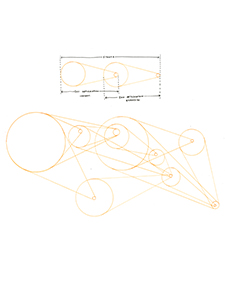Braxton Soderman is an Assistant Professor of Media & Culture and Interactive Media Studies at Miami University, Ohio. He studies digital media, video games, electronic literature, the history of technology, and critical theory. He will begin teaching in the department of Film & Media Studies at The University of California, Irvine, in January of 2014.

Authors | Braxton Soderman
Articles on Amodern by Braxton Soderman
AMODERN 2: NETWORK ARCHAEOLOGY
Networks have structured our social – and media – development long before the emergence of the “network society.” From the letter-writing networks of the proto-Italian aristocracy to the electrical networks that facilitated industrialization; from the spread of woodcuts, pamphlets, and ballads that supported the Protestant Reformation to the twentieth century emergence of broadcast radio and television networks, media have always been situated in the matrices of networks of circulation and distribution, facilitating historically specific modes of connection. These histories often remain disconnected from research on digital networks, the latest to re-shape our socio-technical environment into a mesh of interconnecting nodes. An archaeological approach, one that routes between contemporary and historical networks, Alan Liu argues, has the potential to regenerate a sense of history that would temper the presentism of digital culture, all too often experienced as instantaneous and simultaneous.
This special issue of Amodern features original research, initially presented in 2012 at the “Network Archaeology” conference at Miami University of Ohio, on the histories of networks, the discrete connections that they articulate, and the circulatory forms of data, information, and socio-cultural resources that they enable. Drawing from the field of media archaeology, we conceptualize network archaeology as a call to investigate networks past and present – using current networks to catalyze new directions for historical inquiry and drawing upon historical cases to inform our understanding of today’s networked culture. In this introduction, we elaborate how network archaeology opens up promising areas for critical investigation, new objects of study, and prospective sites for collaboration within the productively discordant approach of media archaeology.
CIRCULATING CONCEPTS: NETWORKS AND MEDIA ARCHAEOLOGY
An Interview with Jussi Parikka
Jussi Parikka is a new media theorist and one of the preeminent scholars currently developing the innovative field of media archaeology. His recent books include an edited volume of Wolfgang Ernst’s writings entitled Digital Memory and the Archive (2013), What is Media Archaeology? (2012), Media Archaeology: Approaches, Applications, and Implications (2011, edited with Erkki Huhtamo), Insect Media: An Archaeology of Animals and Technology (2010), and Digital Contagions: A Media Archaeology of Computer Viruses (2007). Within these books and his other prolific writings, Parrika constructs a menagerie of philosophical insights concerning key pillars of digital culture: networks, the archive, biotechnology, and the logics (and illogics) of technical media.





